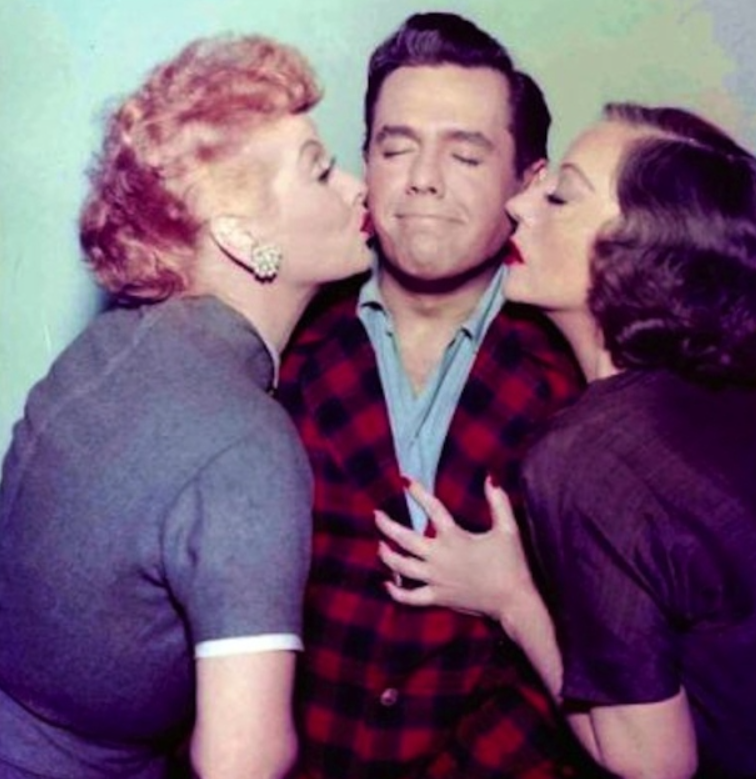
“I Love Lucy” remains one of the most beloved sitcoms in television history, known for its innovative production techniques and timeless humor. Since its original run from 1951 to 1957 on CBS, the show has been continuously syndicated, and it is now readily available on the Paramount+ streaming service. This enduring popularity is a testament to the groundbreaking work of Lucille Ball and Desi Arnaz. Their contributions to television comedy and production have influenced countless sitcoms that followed. “I Love Lucy: The Movie” offers a unique behind-the-scenes look at how these television pioneers made history.
Contents
The Birth of “I Love Lucy: The Movie”

“I Love Lucy: The Movie” is an innovative production that was constructed from three episodes of the show’s first season. This compilation was an early example of repurposing television content for theatrical release. However, the film was shelved after its initial 1953 theatrical showing due to MGM’s insistence that “The Long, Long Trailer,” a 1954 release, should mark the official return of Ball and Arnaz to the big screen. The movie remained lost in Paramount’s vaults until it was rediscovered by the show’s original editor, Dann Cahn, in 2001.
Plot and Iconic Scenes
Throughout “I Love Lucy,” Lucy Ricardo, played by Lucille Ball, is constantly trying to break into show business, often involving herself in her bandleader husband Ricky’s (Desi Arnaz) performances. In “I Love Lucy: The Movie,” Lucy persuades Ricky to perform for a local women’s club and manages to insert herself into the performance, despite Ricky’s attempts to minimize her role. This leads to hilarious outcomes, including a memorable scene where Lucy attempts ballet and burlesque comedy at Ricky’s nightclub.
One of the most iconic scenes in the movie is Lucy’s rendition of the “slowly I turned” vaudeville skit. This classic routine involves a trigger word that sends a character into a frenzied assault on another. The skit, which first appeared in two 1944 films, showcases Ball’s slapstick genius and remains a highlight of her comedic career.
The Technical Innovations of “I Love Lucy”

“I Love Lucy” was revolutionary in its technical production. Unlike most television shows at the time, which were filmed in New York, “I Love Lucy” was shot in Hollywood. This allowed Ball and Arnaz to balance their television and film careers. To ensure high-quality broadcasts, the show was filmed on 35mm film, a decision that set a new standard for television production.
Desi Arnaz also pioneered the use of a three-camera setup, which allowed the show to be filmed in sequence before a live studio audience. This technique provided genuine audience reactions and eliminated the need for laugh tracks, enhancing the viewing experience. The three-camera setup, combined with Karl Freund’s innovative flat lighting system, enabled seamless shooting without the need for different lighting setups for close-ups and wide shots. Freund, a legendary cinematographer known for his work on German Expressionist films and his Oscar-winning work on “The Good Earth” (1937), brought a level of technical expertise that was unprecedented in television at the time.
Behind-the-Scenes Documentary Style
When assembling “I Love Lucy: The Movie” from three episodes, the creators faced the challenge of incorporating the television show’s laugh track into a film format. They resolved this by making the movie partly a documentary about the making of an episode. The film begins with scenes of the audience entering the studio and the crew preparing for the shoot, providing viewers with a rare glimpse into the production process. Desi Arnaz introduces the cast and explains what the audience will see, creating a bridge between the behind-the-scenes footage and the actual episodes.
The Legacy of “I Love Lucy”
“I Love Lucy” has left an indelible mark on television history. The show’s innovative production techniques, such as the use of 35mm film, the three-camera setup, and live audience reactions, became standard practice for sitcoms. These innovations not only improved the quality of television but also set the stage for future productions.
The show’s impact extends beyond its technical achievements. Lucille Ball and Desi Arnaz’s performances, along with the chemistry of the supporting cast, including Vivian Vance as Ethel Mertz and William Frawley as Fred Mertz, created a formula for sitcom success that remains relevant today. The show’s ability to blend physical comedy with relatable storylines has influenced countless television comedies.
Renewed Interest in Lucy and Desi
Hollywood has recently renewed its interest in the lives and careers of Lucille Ball and Desi Arnaz. Films like “Being the Ricardos” (2021) and the documentary “Lucy and Desi” (2022) explore their personal and professional challenges. These productions highlight the couple’s contributions to the entertainment industry and their lasting legacy.
“I Love Lucy: The Movie” offers a unique perspective on the show that made television history. By combining behind-the-scenes footage with classic episodes, the film provides fans with a deeper understanding of the innovative techniques and creative genius behind “I Love Lucy.” The movie serves as a tribute to Lucille Ball and Desi Arnaz, celebrating their pioneering work and enduring influence on television comedy.

